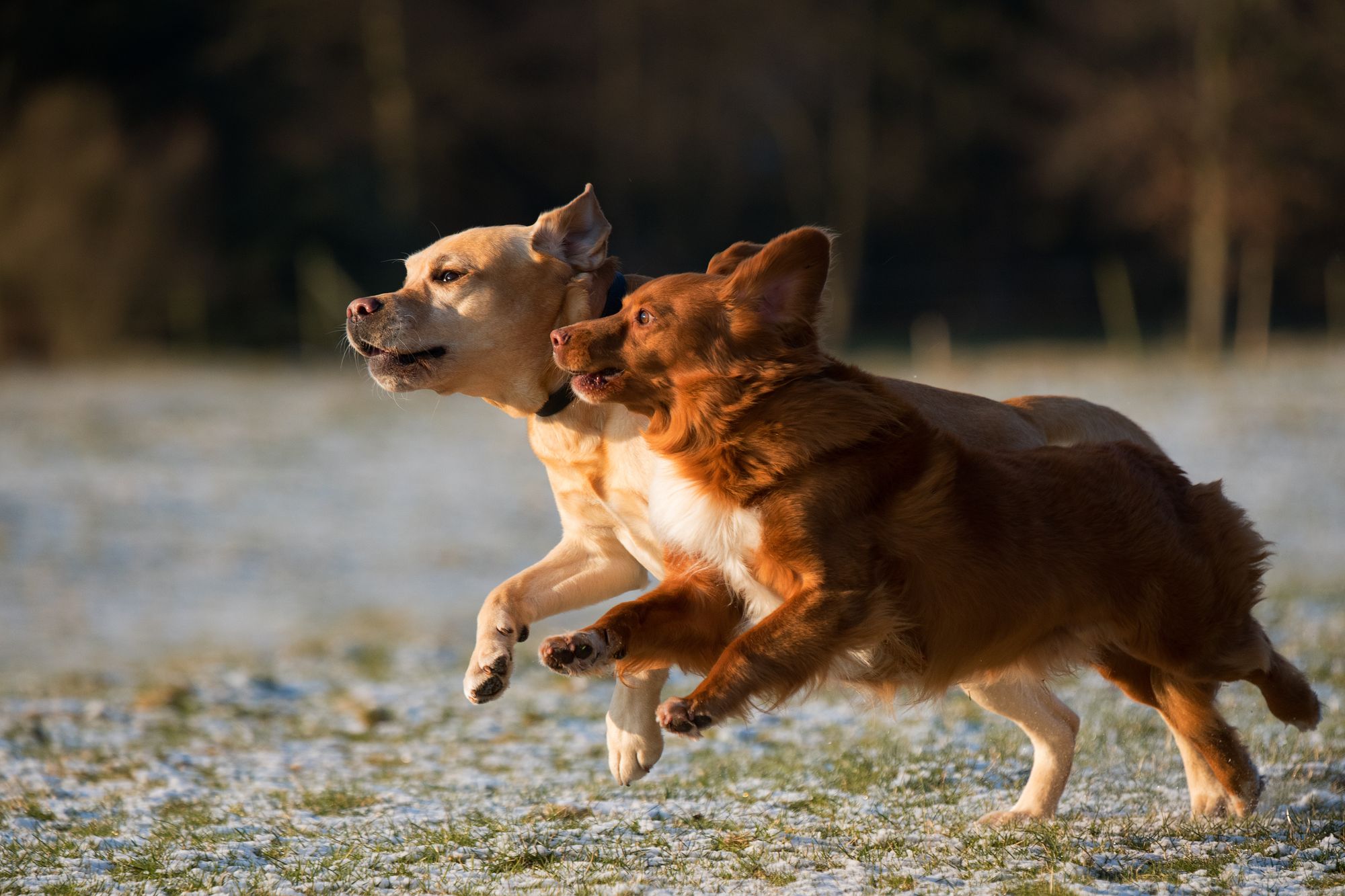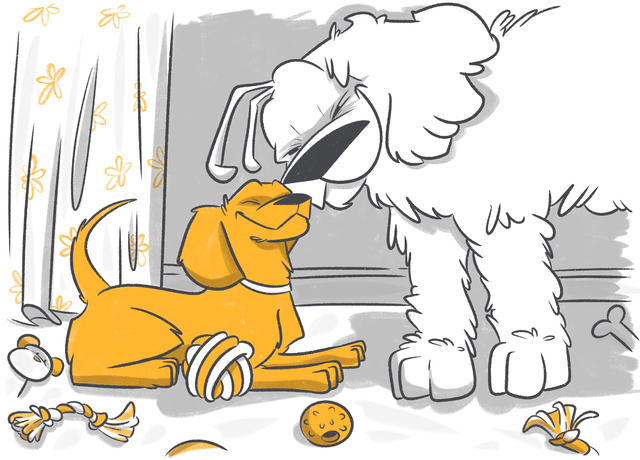It sure is exciting to welcome a new puppy into your home. If you have an older dog, however, there are things to keep in mind before introducing them to your new puppy.
First, remember that your older dog already has a set of routines in your home, which they now consider their territory. On the other hand, your new puppy is still learning about the dog world as well as the right way to behave. Not to mention, they are likely to have boundless energy, which may disturb your older dog’s routines.
Having said this, there is a transition period when it comes to how to introduce a puppy to an older dog. Below are a few guidelines to help make the meeting successful.
Content:
- How to Introduce Your New Puppy to Your Senior Dog
- When Can I Introduce My Puppy to Other Dogs
- How to Introduce a Puppy to a New Home
- Conclusion
How to Introduce Your New Puppy to Your Senior Dog
Before Introductions
For both your senior dog's and your new puppy's health and security, it's best to take precautionary measures to prevent problems when you introduce them.
- Be mindful of your senior dog's behavior and disposition
If your senior dog is territorial, for example, it may take longer for them to ease up on sharing their space. So when it comes to how to introduce a puppy to a dominant dog, it’s best to do it slowly. On the other hand, if your senior dog is small, your puppy might get too rough and harm them in the process. Do some research on both breeds to determine how to approach the situation.
- Have a medical assessment
Before their meeting, have both of your dogs examined by their vet to make sure that they are free from parasites, ticks, fleas, and other conditions that may be contagious. They’re up-to-date with the important vaccines.
- Prepare your home environment
Keep your senior dog’s toys for the time being to prevent territorial behavior. Redesign areas in your space to accommodate both dogs in a way that they can get away from each other if they feel like it. Also, make sure that they have separate food and water bowls to avoid possessive behavior.
Introducing Your Dogs
When you have already taken the precautionary measures above, it’s now time for your dogs to finally meet. However, remember that this involves a transition period that may take time, attention, and patience.
- Let them meet outside of the home
Before you bring your puppy home, how about arranging for them and your senior dog to meet outside first? Walking them side by side at a park or garden without many people or dogs is ideal so that there’s not much pressure. Note that different people should be handling each dog so that the other dog can be redirected if unwanted behavior ensues.
- Use a leash on both dogs
Put a leash on both your dogs, with a different person holding each. Ensure that the ones holding the leashes do so in such a way that they’re loose and relaxed. At a safe distance, walk the dogs parallel to each other. Allow them to become familiar with each other’s presence and scent.
- Follow their lead
While some may easily warm up, others may take more time. Practice patience and allow your dogs to make their move when they are ready. This promotes a safe and stress-free atmosphere for them to get accustomed to each other.
- Observe their body language
Body language is a key indicator of how your dogs are feeling. Watch out for signs such as staring aggressively, raised fur, posturing, and growling. As soon as you notice any of these signs, redirect your dogs’ attention to something else to distract them.
- Dropping their leashes
Once they seem to be comfortable with each other’s presence, you can drop the leashes and let them interact in a secured outdoor area so that they can get to know each other better. Stay on guard for signs of aggressive behavior, but don’t get in the way if they aren’t showing any signs of tension.
- Let them interact at home
It’s now time to bring them home. Because it’s not a neutral environment anymore, it is essential to take things slow. Make sure that they are relaxed and comfortable. If they show any sign of anxiety or aggression, separate them calmly. Once they become comfortable again, repeat.
- Bring them inside
When they’re already comfortable in each other’s company when outside, it’s now time to bring them inside your home. Make sure that your space makes them feel safe. If your senior dog gets annoyed with your puppy’s boundless energy, for example, it’s important to find ways to separate them inside the home, such as by providing a fence, separate rooms, and the like.
In bringing both dogs indoors, a good pet camera such as the Petcube Pet Camera would help in monitoring the way they interact with one another. Having a reliable pet camera helps you detect if there is any anxiety or aggression between your dogs. That way, you may be able to address them quickly.
When Can I Introduce My Puppy to Other Dogs

It’s important to keep your puppy healthy, especially since their immune system isn’t fully developed yet, making them more susceptible to infectious diseases.
Meanwhile, socialization is likewise important for your puppy’s overall health because a lack of socialization may result in an aggressive and fearful dog growing up. According to The American Veterinary Society of Animal Behavior research, "Behavioral issues, not infectious diseases, are the number one cause of death for dogs under three years of age", stating the importance of socialization at a young age.
Given the information above, when can you introduce your puppy to other dogs? As a precaution, vets do not recommend that puppies interact with unvaccinated dogs (and other dogs that you don’t know) before completing their full set of vaccinations. However, this doesn’t mean that your puppy shouldn’t interact with other dogs.
Socialization may begin as soon as you bring your dog into your home, as long as it is in a safe environment and if you know the pets that they are interacting with. With this, you need to know about a pet's medical history and if they have interacted with dogs that you aren’t familiar with. For the time being (until they have completed the core vaccines), don’t bring them to high-traffic areas with lots of pets, such as dog parks.
How to Introduce a Puppy to a New Home
It’s just natural for you to be excited to bring your new puppy home, but it’s also important to put yourself in the shoes of your little canine friend. They’ve been separated from their mother, their kin, the environment they were born in, and the first humans they’ve come to know. Your puppy may be confused and afraid, but there are ways to help them adjust to their new home.
Here are some tips:
- Designate a potty area and train them using positive reinforcement.
- Slowly introduce their new home. Go for one area at a time so they can become accustomed to the environment.
- Introduce them to the family members one at a time. That way, your pup won’t get overwhelmed.
- Give her a sleeping area. This is their safe space, where they can rest and keep themselves comfortable.
- Note that puppies like chewing. Chew toys may help prevent them from chewing on your things.
- Enforce rules in a firm but gentle way. Doing so will help train them to behave well.
- Monitor your puppy. Supervision is important, especially in the early years.
- Most importantly, remember to take things slow. Make it a positive experience for your puppy as you strengthen your bond with each other.
Conclusion
When it comes to how to introduce a puppy to an older dog, it is essential to do so with patience and loving care. The same goes when introducing them to other pets, other humans, and their new home. Remember that it may take time for everyone to adjust, so being mindful of how each one feels is important for a harmonious relationship.
Was this article helpful?
Help us make our articles even better









